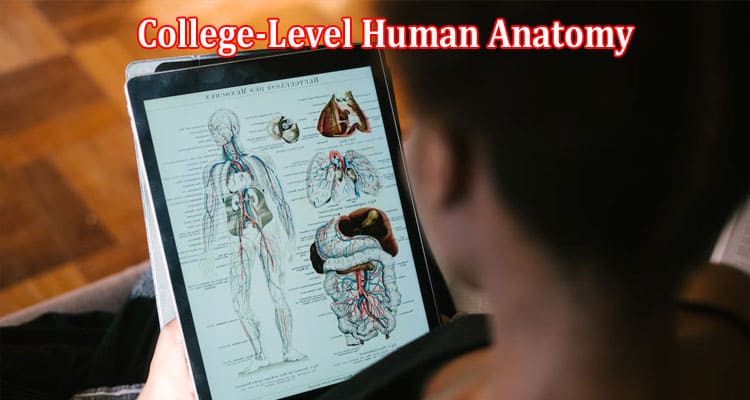College-Level Human Anatomy: Why Is It So Difficult to Understand?
Understanding human anatomy at the college level is often considered a challenging task for many students. This intricate branch of science delves into the complex structures and functions of the human body, requiring a deep level of comprehension and memorization.
According to a Wiley report, 55 percent of college (undergraduate-level) students are struggling to stay interested in their classes. Those taking courses as difficult as human anatomy struggle even more in some cases.
As students embark on their journey to grasp the intricacies of human anatomy, they encounter various hurdles that make the subject particularly daunting. In this article, we look into the reasons why college-level human anatomy is so difficult to understand and offer strategies for overcoming these challenges.
Complexity of Structures
The human body comprises an intricate network of organs, tissues, muscles, nerves, and bones, all interwoven to perform a myriad of functions. Understanding the spatial relationships, functions, and interconnections of these structures requires a comprehensive understanding that goes beyond surface-level memorization.
To overcome this difficulty, students should adopt a systematic approach to studying anatomy. Breaking down the body into its constituent systems—such as the skeletal, muscular, circulatory, and nervous systems—can aid in compartmentalizing information and facilitating deeper comprehension.
Additionally, utilizing visual aids such as anatomical models, diagrams, and digital resources can enhance understanding by providing a tangible representation of complex structures. Also, students shouldn’t hesitate to use Google to find answers to any questions or queries they may have about certain topics.
For instance, as indicated by Proprep, college students often struggle with anatomical illustrations. Many of them particularly fail to grasp the concept of a leader line and how it is used in a diagram.
If that’s the case, students can simply Google the following – which structure is highlighted and indicated by the leader line? There, they can find out what leader lines are and how they are used in anatomical illustrations of the head, heart, etc. A simple online search is enough to give students different answers from different experts and perspectives.
Terminology Overload
Human anatomy is accompanied by an extensive array of specialized terminology, encompassing anatomical names, physiological processes, and medical terminology. According to Study In Nursing, for students new to the subject, mastering this vast lexicon can feel overwhelming and intimidating. Moreover, many anatomical terms originate from Latin or Greek roots, adding an extra layer of complexity to the learning process.
Students should prioritize active engagement with the terminology through regular practice and repetition. Flashcards, mnemonic devices, and interactive quizzes can aid in reinforcing vocabulary retention. Additionally, integrating terminology into everyday use through discussions, note-taking, and practical applications can solidify understanding and familiarity over time.
Integration of Multiple Disciplines
Human anatomy serves as a bridge between various scientific disciplines, including biology, physiology, chemistry, and medicine. Therefore, students must navigate the integration of concepts from these diverse fields, each contributing unique perspectives to the study of the human body. Understanding the physiological mechanisms underlying anatomical structures and their biochemical foundations adds layers of complexity to the learning process.
To overcome this struggle, students need to adopt a holistic approach to studying human anatomy. Establishing connections between anatomical structures and physiological functions facilitates a deeper understanding of the underlying mechanisms at play. Moreover, collaborating with peers from different academic backgrounds can provide diverse insights and perspectives, enriching the learning experience.
Depth of Memorization
Memorization plays a crucial role in mastering human anatomy. Students are required to memorize vast amounts of information ranging from anatomical structures and functions to physiological processes and clinical correlations. However, the depth of memorization required can be overwhelming, particularly when coupled with the need for conceptual understanding and application.
Students should consider employing effective memory techniques tailored to their individual learning styles. These may include mnemonic devices, visualization strategies, concept mapping, and spaced repetition.
Also, according to BetterHelp, focusing on memorization alone will not always allow students to learn complex concepts that are common in anatomy. Therefore, students must also integrate active learning strategies such as practice quizzes, self-testing, and teaching others. These approaches can reinforce retention and comprehension.
Lack of Contextualization
Understanding human anatomy in isolation can hinder students‘ ability to grasp the relevance and significance of anatomical concepts in real-world contexts. Without proper contextualization, anatomical structures may appear as disconnected entities, making it difficult for students to appreciate their functional significance and clinical implications.
To address the lack of contextualization, students should seek opportunities to apply anatomical knowledge in practical settings. Clinical case studies, laboratory dissections, and hands-on experiences provide valuable opportunities to bridge the gap between theory and practice. Furthermore, exploring interdisciplinary connections between anatomy and related fields like pathology and physical therapy can deepen understanding and foster a more holistic perspective.
In conclusion, as seen from our discussion above, college-level human anatomy presents numerous challenges that require dedication, perseverance, and strategic study techniques to overcome. However, through consistent practice and effort to learn, students can unlock the mysteries of the human body with a bit of ease. In doing so, they can make their lives much easier if they end up taking human anatomy courses in college.




